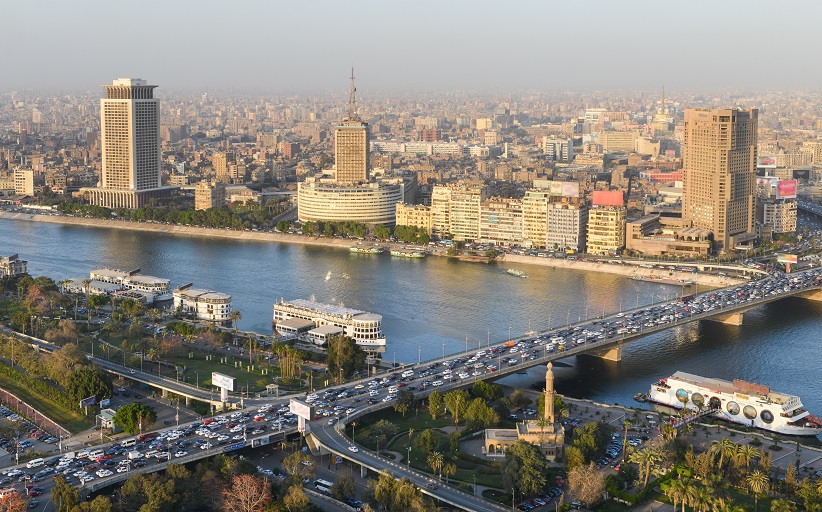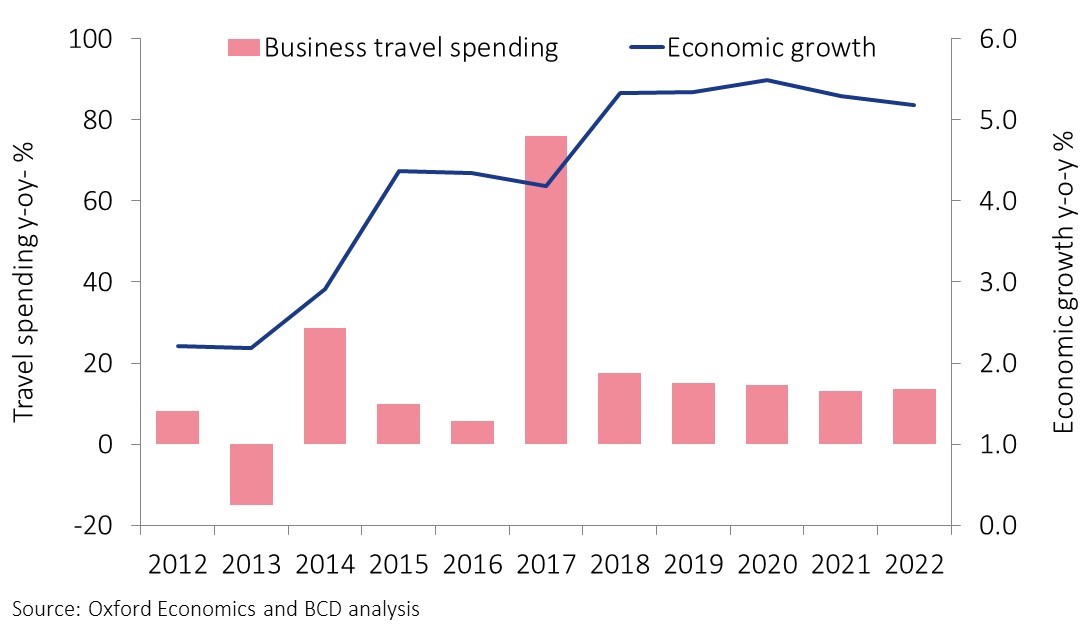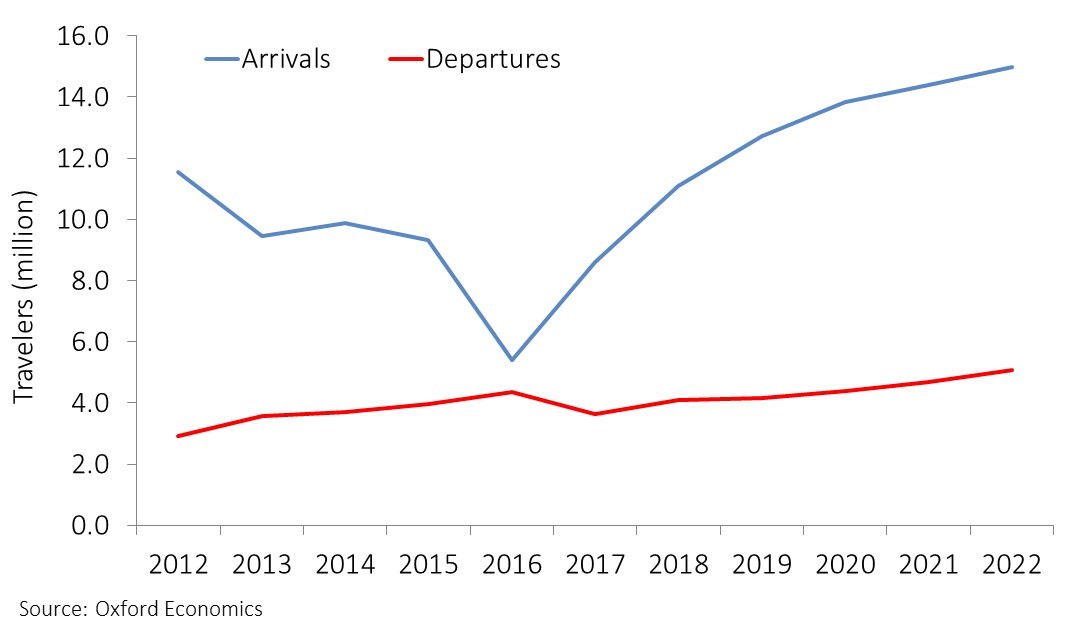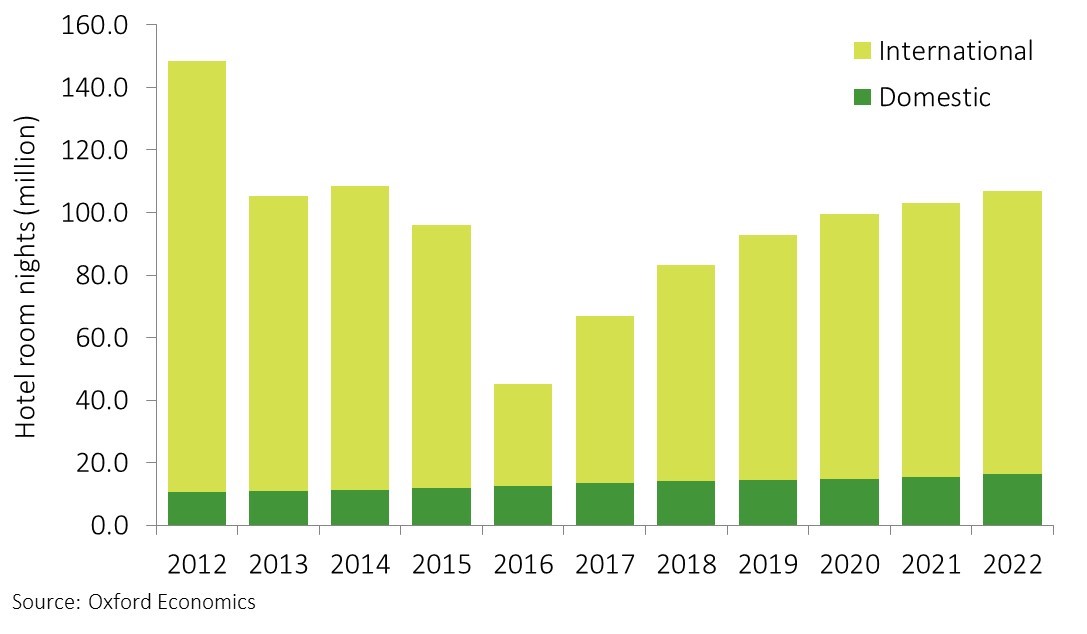
Business travel recovers as international visitors and investment return
Businesses spent less than US$3 billion (48 billon Egyptian pounds) on travel in Egypt in 2017. But spending growth is strong, averaging more than 17% annually between 2012 and 2017, according to BCD Travel analysis of Oxford Economics data. The market is volatile, as evidenced by the 76% year-over-year rise in business travel spending reported in 2017. Domestic trips account for 48% of all spending; inbound trips made up 46% of spending. Egypt’s economy emerged from a slowdown triggered by 2011’s “Arab Spring” and has been expanding since 2016. Economists expect corporate travel spending to keep growing, too—predicting 15% growth per year through 2022. Outbound trips will expand most, growing by 26% per year, but they’ll still make up just 9% of all business travel spending by 2022.
Economic environment
Economic growth and business travel spending
Click on image to enlarge
- The government’s renewed focus on taxation and other reforms and an ambitious International Monetary Fund program aimed at improving Egypt’s economic structure are laying the foundation for future growth.
- The re-launch of a stalled privatization program has boosted domestic and international investors’ confidence and willingness to provide capital.
- The Egyptian economy is forecast to accelerate to 5.3% in 2018, helped by strong exports and domestic demand, as private sector investment and government spending grow.
- The country still faces challenges, including high unemployment, poor labor market conditions and weak health care and education. These and other pressures should slow growth to 5% in 2019.
Air
International travel
Click on image to enlarge
- Arrivals account for around 70% of all international trips, but demand collapsed after terrorist incidents in 2016. Neighboring countries, particularly Saudi Arabia, accounted for most visits to Egypt during this time.
- Visitors from other regions began returning in 2017, and the government supported the recovery with a new e-visa service. Breaking Travel News recently reported that the program makes it easier for citizens from 46 countries to obtain an Egyptian entry visa online. Europeans are now expected to regain the lead among inbound travelers.
- Egyptair, which includes Air Sinai and Egyptair Express, holds a strong market position, accounting for half the flights departing from both Cairo and Sharm El Sheikh.
- Nile Air is Egyptair’s only rival on domestic routes and also competes for international travelers flying to some locations in the Middle East, Africa and southern Europe.
Accommodation
Hotel demand
Click on image to enlarge
- Demand for hotels slumped as international travelers stayed away from Egypt in 2016, but international demand is rising and is expected to rebound to 85% of the overall hotel market by 2022.
- Domestic demand has been more resilient, but it accounts for just one-fifth of all room nights.
- Global hotel chains occupy the top three places in the Egyptian market, led by Marriott with 18 properties, just ahead of Hilton and AccorHotels. New developments are in the pipeline, including St. Regis Cairo opening in 2018; W Sharm El Sheikh following in 2020; and Element Cairo in 2021.
- Despite these projects, global chains are scaling back their Egyptian portfolios and exiting some markets, and business travelers may have to opt for local chains. These include Azur Hotels, Tolip Hotels, Pickalbatros and Sunrise Resorts, which focuses mostly on resort destinations.




